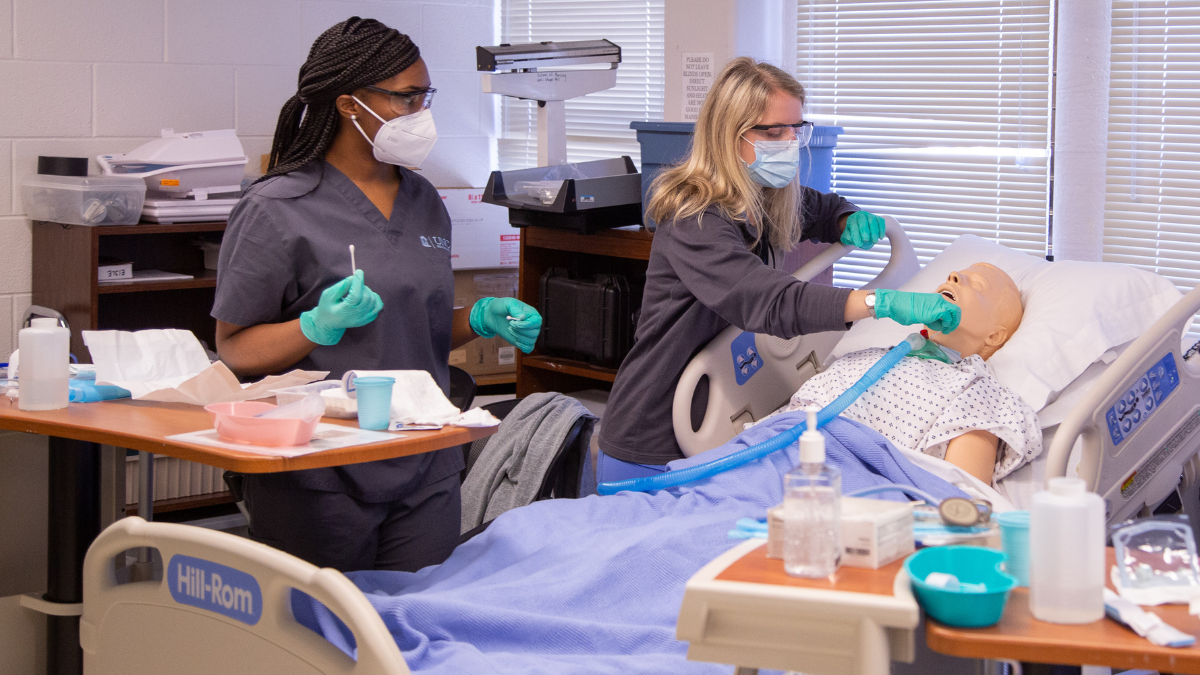Tool developed by Carolina researchers forecasts the future supply and demand of nurses
The University of North Carolina at Chapel Hill Sheps Center Program developed NC Nursecast to project supply and demand of nurses in North Carolina and better support policymakers, schools, professional organizations and hospitals.

A new workforce model developed by the University of North Carolina at Chapel Hill Cecil G. Sheps Center Program on Health Workforce Research and Policy projects a looming nursing shortage in North Carolina.
The projection about the future supply and demand of nurses is included in NC Nursecast, a workforce model developed over two years with support from the North Carolina Board of Nursing.
The launch of the model comes at a critical time for nurses who have shown tremendous commitment to care during the coronavirus pandemic.
Yet the state faced a shortage of nurses before the pandemic began: shortages of 12,500 registered nurses – about 11% of the RN workforce — and 5,000 licensed practical nurses — about 27% of the LPN workforce – projected by 2033.
Recruiting and retaining nurses is key to addressing the nurse shortages, said Erin Fraher, deputy director of policy at the Sheps Center.
“Expanding enrollment in nursing programs is important but we also must focus on retention — cherishing our existing workforce — and recruiting nurses back into the profession,” she said.
The NC Nursecast team used historic state nurse licensure data, North Carolina Office of Budget and Management population data, population survey data on health and medical visits and an expert advisory group to create the model.
The model also provides a separate interactive web-based tool, NC Nursing Graduate Diffusion that allows users to see where students in North Carolina’s nurse training programs practice after graduating.
Hospitals are the largest employers of RNs in the state, and in terms of headcount, the largest shortage of RNs will be in hospitals.
By contrast, the majority of LPNs are employed in nursing home/extended care/assisted living settings and this is where shortages of LPNs will be.
“Burnout is a strong predictor of nurse turnover and burnout is especially high right now,” said nursing professor Cheryl Jones, director of the Hillman Scholars Program in Nursing Education at the UNC School of Nursing and advisor on NC Nursecast. “Addressing the conditions that lead to nurse burnout, and subsequent nurse turnover, will be essential for retaining the nursing workforce.”
Statewide findings
Most regions of the state face RN shortages except for the Southeast region, which is projected to have a slight surplus, in part because of strong training programs in that region.
The return on investment from North Carolina nurse training programs is high: North Carolina retains more than 90% of the nurses that graduate from its programs.
Areas with large metropolitan areas face higher RN shortages than non-metro areas, but all regions of the state face LPN shortages in the future.
To highlight needs in different parts of the state, the team focused on North Carolina’s Area Health Education Centers. The NC AHEC Program has nine regions covering all 100 counties in NC with a mission to recruit, train, and retain the healthcare workforce needed for a healthy North Carolina.
A snapshot of AHEC area trends:
- The Wake AHEC area (containing Raleigh-Durham-Chapel Hill) and the Northwest AHEC area (containing Winston-Salem) face the largest RN shortages.
- The Mountain AHEC area (Western North Carolina) and Wake AHEC area (containing Raleigh-Durham-Chapel Hill) face the largest LPN shortages.
Projections are based on state licensure data, which is more precise than forecasting models that rely on surveys.
With licensing data, experts can account for the dynamic nature of nursing as nurses shift from LPNs to RNs and RNs to advanced practice nursing — or if at some point in their career a nurse becomes inactive.
No other model provides this level of in-depth forecasts about North Carolina’s nurses on an interactive platform with customizable data and visualizations, such as line charts, regional maps and graduate diffusion maps.
Further, the model offers users the ability to examine possible surpluses and shortages by nurse practice settings such as hospitals or correctional facilities, and by location – for example, cities, suburbs or Medicaid regions.
“What makes the model unique is we engaged with nurses – meeting with hospital, long-term care and hospice nurses,” Fraher said. “That combination of data and expert input strengthens the validity of our findings.”
Importantly, the model also allows users to explore different “what if” scenarios that would alter the forecast. For example, what if nurses experience increased burnout and exit the field two years early or five years early? Conversely, what if more students enter nurse training programs?
The model can provide policymakers, schools, professional organizations and hospitals with answers.




